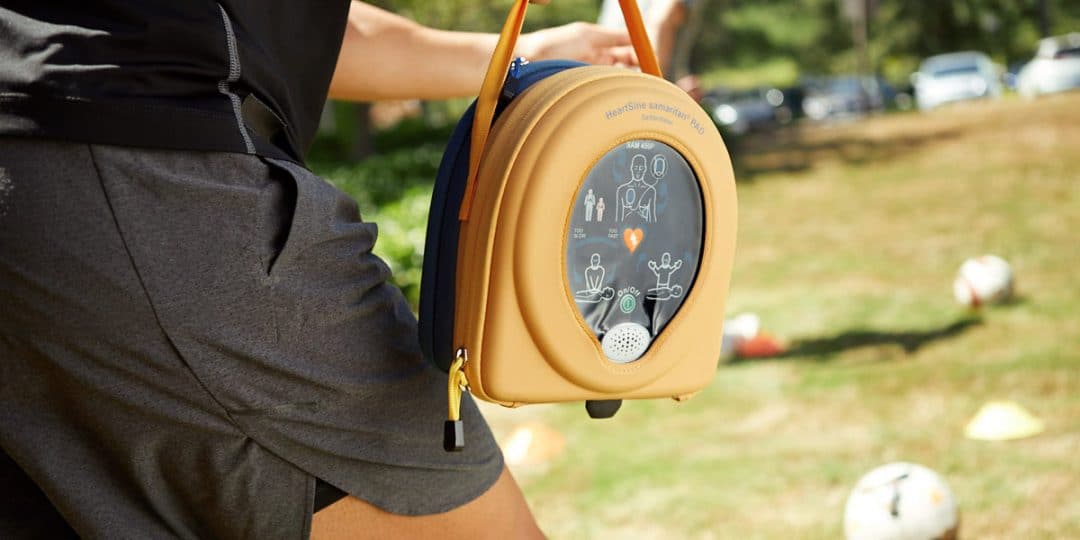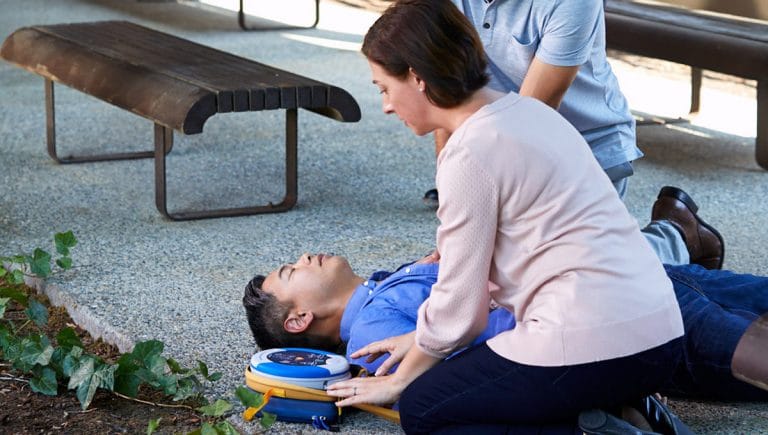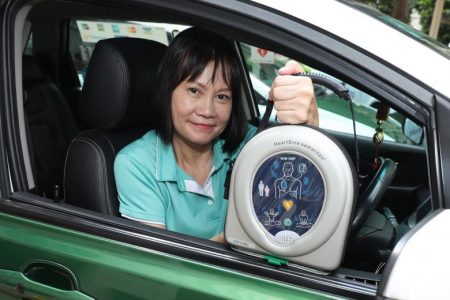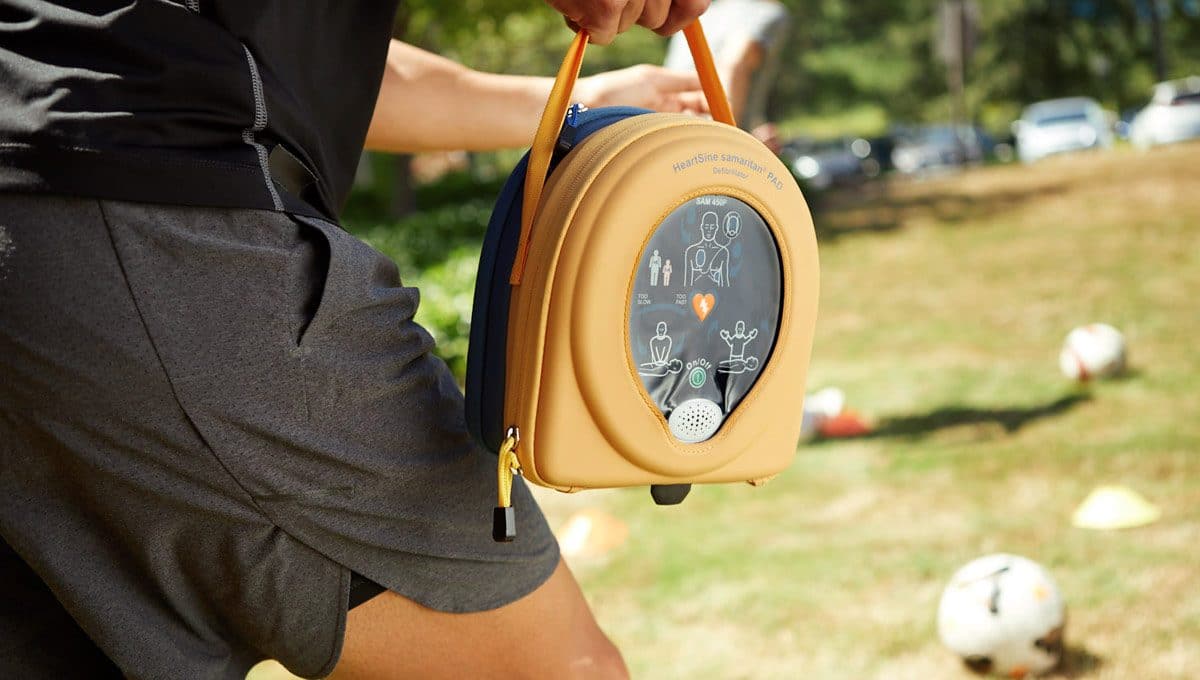
More than 2,500 Out-of-Hospital Cardiac Arrest (OHCA) occurs every year in Singapore, out of which only 5.3% of victims survive the deadly incidents(1). Even with Singapore’s advanced healthcare response and emergency rescue, the brain start dying soon after the victim collapsed and the heart’s stop beating. In order to save a cardiac arrest victim, the only possible rescue procedure as a lay-rescuer or bystander, is to apply effective early CPR AED resuscitation.
When is an AED used?
Before we explore the use of AED, we must understand the situation that calls for the need for an AED.
An AED can only be used in a cardiac arrest emergency. However, more than often, cardiac arrest is often misunderstood as heart attack.
A heart attack is NOT the same as sudden cardiac arrest. A heart attack happens as a result of blockage due to build-up of cholesterol or plaque, obstructing the blood flow to the heart. While sudden cardiac arrest (SCA) strikes when the heart stops beating due to electrical disturbance in your heart that disrupts its pumping action, stopping blood flow to the rest of the body. Unfortunately, a heart attack is known to develop into sudden cardiac arrest when left untreated.
Sudden cardiac arrest is easily identified by the symptoms of:
Sudden collapse
Loss of consciousness; and
No sign of pulse and breathing
When you spot these signs, immediately call for the local ambulance, get an AED and start chest compressions.
How can CPR AED help?
Automated External Defibrillator (AED) is a portable device that checks the heart rhythm of a suspected cardiac arrest emergency. If needed, an AED delivers the shock to revive the victim by restoring the heart rhythm to start pumping blood effectively.
However, AED is often not accessible at hand immediately to assess and deliver the shock. And worse, not all cardiac arrests are identified as shockable cases. Hence in some situation, your AED may not be as useful as you think. This is one of the reasons why there is a low percentage of survival for cardiac arrest victim.

While AED may not be able to deliver shocks when not required, there are a few technologies built-into an AED that may provide CPR feedback support. For example, HeartSine 500P with CPR Advisor. In order to delay the irreversible damage caused by cardiac arrest until paramedics arrive and take over, Cardiopulmonary Resuscitation (CPR) is applied to keep blood flowing to your heart and brain.
Together, the CPR AED technique improves the chance of survival of the cardiac arrest victim. Studies show that when defibrillation is applied within the first three minutes of collapse, the victim will have a chance of survival of up to 75%.
How to determine if I need an AED in Singapore?
In order to assess the need for an AED, we need to ask ourselves the following risk factors to consider in order to correctly determine whether you should install an AED in your premise(s):
Demographics Risk
Does your employees/family members have any cardiac disease history? Does the ageing population contribute to a significant segment of your overall employees/family members’ profile?
With the presence of cardiac disease history and an ageing community in your organization/home, the likelihood of cardiac arrest emergency occurred will be higher.
Nevertheless, there is still common misconception around cardiac arrest, that it only happens to males of older age, who smokes and suffers from diabetes or high cholesterol. As a matter of fact, it can happen to anyone, of any age, that is active, healthy, and shows no signs of cardiac arrest.
Though exercise is, in general, health-promoting, it is also associated with an increased risk of sudden cardiac death for a small number of individuals who harbour cardiac conditions
A review by Canadian Medical Association Journal reveals that 29% of athletes had symptoms of heart disease prior to an arrest(2). These cardiac arrests are often caused by inherited cardiac conditions or developed heart anomalies during their training.
Environment Risk
Are your facilities constantly packed with the crowd? How about the work performed that might be linked to electrical accidents?
It’s not all about the profile of your employees, family members or visitors, but also the environment where it might poise as potential risks of cardiac arrest occurrence.
Contrary to the belief, sudden cardiac arrest can not only happen because of genetic/cardiac disease but can also occur due to electric shock, choking, drowning, trauma to the chest/head area, overdose of illegal drugs, and stress.
When large groups of people are present, the chance of someone collapse increases. Some places carry a higher risk than the others (busy transport hub, shopping malls, swimming pool, sports centre,etc).
The nature of work performed may also increase the likelihood of occurrence (electrical works, handling chemicals substance, physically demanding jobs – construction, maintenance, factories, etc).
Impact of Occurrence
The current overall survival rate of Sudden Cardiac Arrest is 5.3%, which means that less than one out of ten survived the deadly incident. If one of your employees dies from a cardiac arrest without an AED to the rescue, how will this impact your company image and reputation?
Do I need to purchase AED in Singapore?
Police and Paramedics are equipped with AEDs in Singapore, and AEDs are now widely installed in various public locations in Singapore – HDBs, condominiums, malls, office buildings, airports, sports centres, and even with AED on Wheels programme by Singapore Heart Foundation.
Using the close proximity to a police or ambulance station as an excuse to not install AED is fatal, as this mindset assumes that police and ambulance will standby to the rescue. As of March 2019, Singapore SCDF will not do hospital run if it’s not an emergency.

EMS’ response time between the time of call to arrival should also be considered. For every minute that goes by without help, the victim’s chance of survival drops by 10%. Within 3 – 5 minutes without resuscitation, the victim will start sustaining irreversible brain damage.
Despite the continuous effort to promote CPR AED awareness, it is still not enough. Not only from the perspective on the number of AEDs installed, but also on the awareness of AED locations, and the knowledge to apply AED when needed.
Hence, even though you purchased an AED, but if your employees/family members do not have the confident or proper knowledge to use the AED, It will be futile.
You should ensure an effective AED programme in place to train and refresh skills once a while, that includes:
AED should be made available in 1.5 minutes brisk-walking distance
AED to be placed at a prominent location with clear signage
Identify the first-aid response team, and ensure they are regularly trained and confident in applying CPR AED

